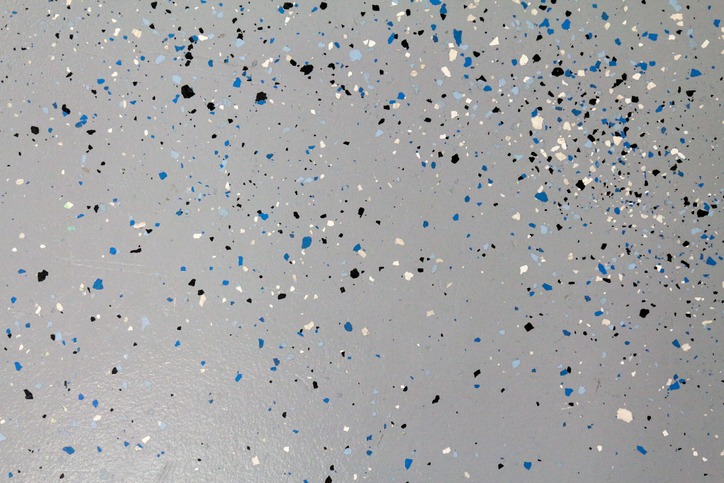Epoxy is a type of synthetic resin that is commonly used as a protective coating on concrete floors. When properly applied, commercial epoxy flooring can extend the lifespan of your floor and protect it from damage. However, like all things, epoxy has a limited lifespan and will eventually need to be replaced. Here is a look at the average lifespan of epoxy and what you can do to extend its life.
How long does epoxy last?
On average, epoxy will last for about ten years before it needs to be replaced. However, several factors can affect the lifespan of your epoxy coating, including the quality of the epoxy is important in determining how long it will last. Higher-quality epoxies will usually last longer than less expensive varieties. Make sure to choose a good-quality epoxy for your floor to ensure the longest possible lifespan.
How can I extend the life of my epoxy?
There are a few things you can do to help extend the life of your epoxy coating:
- Keep your floor clean and free of debris: This will help prevent any damage or wear to the epoxy coating.
- Avoid using harsh chemicals or abrasive cleaners on your floor: These can damage the epoxy and shorten its lifespan.
- Inspect your floor regularly for any cracks or damage: If you catch any problems early, you can repair them before they cause further damage.
- The thickness of the coating: The thickness of the epoxy coating is another important factor in determining its lifespan. A thicker coating will usually last longer than a thinner one. When reapplying epoxy, apply a thick enough layer to ensure a long-lasting finish. For example, a 1/8-inch thick coating may last for eight years, while a 1/4-inch thick layer may last for 11 years.
- The type of floor it is applied: the flooring you apply epoxy to can also affect its lifespan. For example, a wood-type floor will usually wear down more quickly than concrete, so if you are coating wood floors, try to avoid washing them or re-staining them until the epoxy has had a chance to set them. The same goes for other types of floors. For example, marble and granite will usually adhere better to epoxy than oak flooring.
- The location where your floor is installed: The environment in which the epoxy can impact its lifespan. For example, floors installed in a warehouse or factory will tend to get more wear and tear than residential floors. The same goes for kitchens, where grease and grime are often a problem.
- The heat from the sun or extreme cold: Doors or windows that are not properly sealed can allow heat from the sun and extreme cold to affect your epoxy. This will cause the epoxy to set faster and shorten the lifespan of your floor.
- The environment in which the floor is installed: The environment in which your epoxy floor is installed can also impact its lifespan. Extreme cold, for example, will shorten its lifespan because it slows down the setting time of your epoxy and increases the potential for cracking from ice damage.
How often should I reapply epoxy?
Although your epoxy coating is durable and will last several years, you will eventually need to reapply it. Before applying new epoxy, ensure the previous coat has cured properly. You can usually tell that a coat has cured when it turns hard and the bubbles have reached the floor’s surface.
What is the best way to reapply it?
The resurfacing process can be broken down into a few simple steps:
- Wash your floor thoroughly: This will remove any debris that may have accumulated in the bottom layer of your epoxy coating.
- Remove the old epoxy: You can scrape it off or use various tools, including a razor blade and a scraper. This will significantly reduce the amount of time you spend removing the old coating.
- Apply new epoxy: The new layer should be applied in the same manner as the old one. For example, if you apply a 1/8-inch thick layer of epoxy, you should also apply another layer that is 1/8-inch thick.
- Let the epoxy cure: Let the epoxy cure for at least 48 hours before walking or standing on it.
If you follow these steps carefully and take proper care of your floor, your epoxy coating will have a long, durable lifespan, and you won’t need to reapply it for many years to come.
When should you replace your epoxy coating?
Eventually, all epoxy coatings will need to be replaced. Signs that it is time to replace your epoxy coating include:
- The coating is wearing thin: The epoxy coating will wear down and become thinner. When this happens, it is time to apply a new coat of epoxy.
- The coating is losing its shine: A dull, lifeless coat of epoxy is a sign that it is time to replace the coating.
- The floor is damaged: If the floor beneath the epoxy coating is damaged, it will need to be repaired before a new coat of epoxy can be applied.
- The epoxy is cracked: Cracks in the epoxy coating are a sign that it is time to replace the coating.
Conclusion
A commercial epoxy flooring coating is a great way to protect your floors and extend their lifespan. However, it is important to keep in mind that all epoxy coatings will eventually need to be replaced. By taking proper care of your floors and reapplying epoxy when necessary, you can ensure that your floors will last for many years to come.

